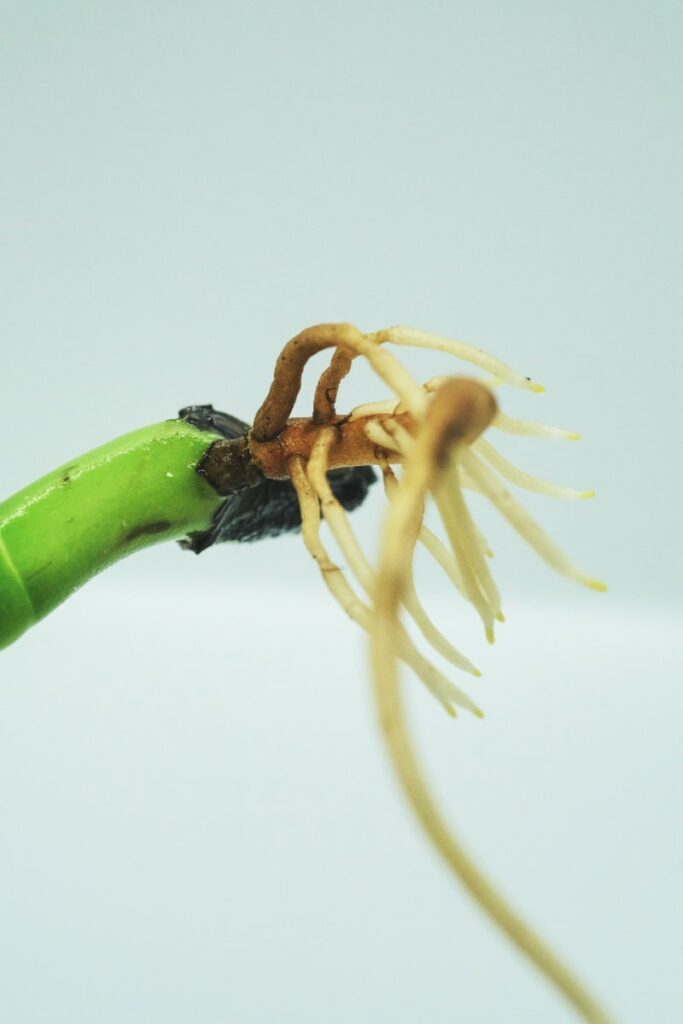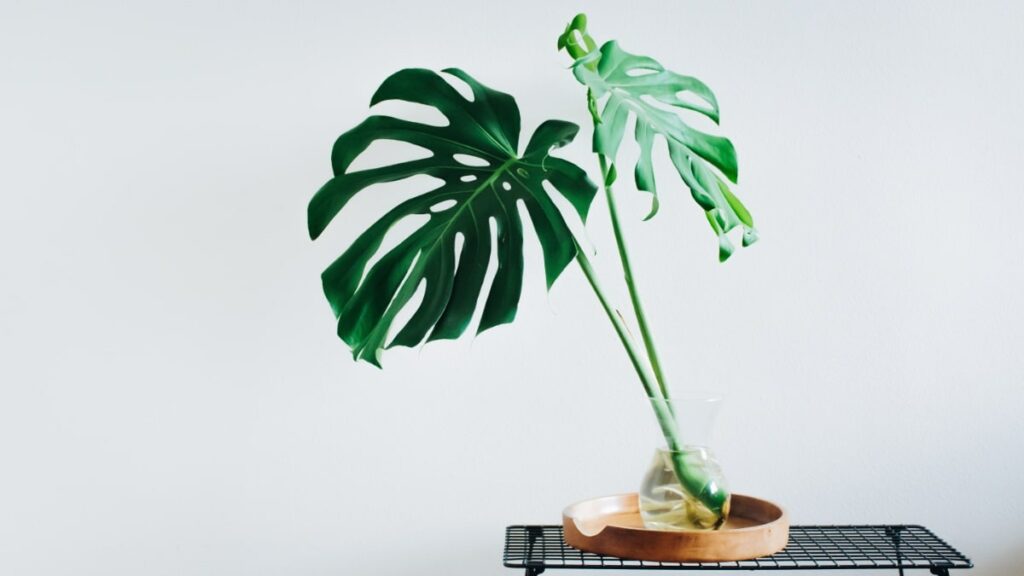Monstera plants are a favorite among indoor gardening enthusiasts, thanks to their signature fenestrated leaves. However, as with any other plant, they are vulnerable to a range of diseases and pests. One of the most prevalent issues that Monstera owners encounter is root rot, a fungal disease that attacks the roots of the plant, causing them to deteriorate and eventually perish. If left untreated, this can result in stunted growth, yellowing leaves, and even the death of the plant. In this article, we will explore how to deal with Monstera root rot, overcoming this issue and ensuring that your plant remains healthy and thrives in your home.
Identifying the Symptoms of Monstera Root Rot
Monsteras are renowned for their stunning and distinctive foliage, but they are also vulnerable to root rot, a fungal disease that can cause the roots to decay and eventually perish. If left untreated, root rot can lead to the demise of the entire plant. Therefore, it is imperative to detect the symptoms of monstera root rot early on to prevent further damage.
One of the initial indications of monstera root rot is the yellowing of leaves. The leaves may also become wilted and droopy, even if the plant has been watered correctly. As the disease progresses, the leaves may turn brown and fall off the plant. Another symptom of root rot is a foul odor emanating from the soil, which is caused by the decaying roots and is a clear indication that the plant is suffering from root rot.
If you suspect that your monstera plant has root rot, you can check the roots for further confirmation. Healthy roots should be firm and white, while roots affected by root rot will be soft and brown or black. You may also notice that the roots are slimy or mushy to the touch.
It is important to note that these symptoms can also be caused by other factors, such as overwatering or underwatering. Therefore, it is crucial to carefully examine the plant and its environment to determine the cause of the symptoms.
Identifying the symptoms of monstera root rot is crucial in preventing further damage to the plant. Keep an eye out for yellowing leaves, a foul odor, and soft, brown or black roots. If you suspect that your plant has root rot, take action immediately to save your monstera.
Causes of Monstera Root Rot
There are a variety of factors that can contribute to this issue, including overwatering, poor drainage, and fungal infections. Overwatering is the most common cause of root rot in Monstera plants, as it can lead to the roots becoming waterlogged and ultimately rotting. Poor drainage is another factor that can contribute to root rot, as soil that does not drain properly can become waterlogged and lead to root rot.
Fungal infections are also a potential cause of root rot in Monstera plants, with a variety of fungi, such as Pythium, Phytophthora, and Rhizoctonia, being able to infect the roots and cause them to rot and eventually die. Identifying the cause – and how to Deal with Monstera root rot – is crucial, as it will allow you to take the necessary steps to prevent it from happening again in the future.
Prevention of Monstera Root Rot

Preventing monstera root rot is a crucial aspect of ensuring the longevity and health of your plant. To achieve this, there are several tips you can follow that will help you avoid the occurrence of root rot.
First, proper watering is essential. Overwatering is the most common cause of root rot, so it’s crucial to water your monstera only when the top inch of soil is dry. Additionally, avoid letting the plant sit in standing water, as this can lead to waterlogged soil and root rot.
Second, good drainage is key. Ensure that your monstera is planted in a pot with good drainage holes. This will allow excess water to drain out of the soil and prevent water from accumulating in the pot.
Third, using well-draining soil is vital. A well-draining soil mix that allows water to flow through easily is ideal. Avoid using heavy soils that retain water, as this can lead to waterlogged soil and root rot.
Next, over-fertilizing should be avoided. Over-fertilizing can lead to salt buildup in the soil, which can damage the roots and lead to root rot. Follow the recommended fertilization schedule for your monstera and avoid using too much fertilizer.
Finally, monitoring humidity levels is crucial. Monstera plants thrive in high humidity, but excessive humidity can lead to fungal growth and root rot. Use a hygrometer to monitor the humidity levels in your home and adjust accordingly.
By following these tips, you can prevent monstera root rot and keep your plant healthy and thriving. Remember to always monitor your plant for signs of stress or disease and take action promptly if needed.
Treatment of Monstera Root Rot
If you have the misfortune of discovering that your Monstera plant is suffering from root rot, it is imperative that you take swift action to rescue your plant from the brink of death. Here are some steps you can take to treat Monstera root rot:
1. Remove the plant from the pot: With utmost care, extract the Monstera plant from its pot and gently shake off any excess soil. Take a closer look at the roots for any signs of rotting. If the roots are brown, mushy, and have a foul smell, it is a clear indication of root rot.
2. Trim the affected roots: With a clean and sharp pair of scissors or pruning shears, trim off the affected roots. Be sure to cut back to healthy tissue and avoid damaging any healthy roots.
3. Wash the roots: Rinse the roots under running water to remove any remaining soil and debris. This will also help to eliminate any fungal spores that may be present.
4. Apply fungicide: Apply a fungicide to the roots to kill any remaining fungal spores. Follow the instructions on the label carefully and make sure to apply the fungicide evenly to all the roots.
5. Repot the plant: Select a new pot that is slightly larger than the previous one and fill it with fresh, well-draining soil. Place the Monstera plant in the new pot and gently pack the soil around the roots. Water the plant thoroughly and allow the excess water to drain out.
6. Monitor the plant: Keep a close eye on your Monstera plant for any signs of stress or further root rot. Make sure to water the plant only when the soil is dry to the touch and avoid overwatering.
By following these steps, you can effectively treat Monstera root rot and save your beloved plant. Remember, prevention is always better than cure, so make sure to provide your Monstera plant with the right growing conditions and avoid overwatering to prevent root rot from occurring in the first place. Knowing how to Deal with Monstera root rot, you can better guarantee your plant’s health to prevent this issue in the first place.
How to Save a Monstera Plant with Root Rot

If you have noticed that your Monstera plant is suffering from root rot, don’t fret! There are still ways to save it. Here are some steps you can take to help your plant recover:
1. Remove the plant from its pot: This is a crucial step in the process. Carefully remove the Monstera plant from its pot and gently shake off any excess soil. Be sure to remove any dead or mushy roots. This will help to prevent the spread of the root rot.
2. Trim the roots: Using a clean pair of scissors or pruning shears, trim away any remaining dead or mushy roots. This is a delicate process, so be sure to cut back to healthy tissue. This will help to promote new growth and prevent further damage.
3. Clean the roots: Rinse the roots under running water to remove any remaining soil or debris. This is an important step in the process, as it will help to remove any bacteria or fungi that may be present. You can also soak the roots in a solution of water and hydrogen peroxide (1 part hydrogen peroxide to 3 parts water) for 30 minutes to help kill any remaining bacteria or fungi.
4. Repot the plant: Choose a new pot that is slightly larger than the old one and fill it with fresh, well-draining soil. This will help to provide your Monstera plant with the nutrients it needs to recover. Place the Monstera plant in the new pot and gently pack the soil around the roots.
5. Water the plant: Water the plant thoroughly, but be sure to allow the soil to dry out slightly between waterings. Overwatering can lead to root rot, so be sure to monitor the soil moisture levels carefully. This will help to prevent further damage and promote new growth.
6. Provide proper care: To help your Monstera plant recover from root rot, be sure to provide it with proper care. This includes placing it in a bright, indirect light, fertilizing it regularly, and keeping it away from drafts and extreme temperatures. This will help to promote healthy growth and prevent further damage.
7. In extreme cases, a vine cutting may be taken to save the upper part of the plant from the rotting base. You can follow our Monstera propagation guide for taking a node cutting and creating a new plant. Note: If your node includes any aerial roots, ensure any signs of rot are cut back before propagating to ensure the health of the new plant.
By following these steps, you can know how to Deal with Monstera root rot and allow it to thrive once again. Remember, prevention is always the best course of action, so be sure to monitor your plant’s soil moisture levels and provide it with proper care to prevent root rot from occurring in the first place.
Conclusion and Final Thoughts on Monstera Root Rot
The issue of Monstera root rot is a common one that can be easily avoided and remedied with the right care and attention. It is imperative to provide your plant with well-draining soil, adequate water, and proper lighting conditions to ensure its longevity and vibrancy. Regularly inspecting your plant for signs of root rot, such as yellowing leaves, wilting, and mushy roots, is also crucial. If you do happen to notice any of these symptoms, it is imperative to take immediate action to prevent the spread of the disease.
With a little bit of elbow grease and a watchful eye, you can keep your monstera plant thriving and beautiful. By following these simple steps, you can enjoy the beauty and benefits of this popular houseplant for years to come. So, don’t let root rot get the best of your monstera plant – take action and give it the care it deserves!
Frequently Asked Questions
What causes Monstera root rot?
Monstera root rot is caused by overwatering, poor drainage, or soil that retains too much moisture. Fungal infections can also cause root rot.
How do I know if my Monstera has root rot?
Signs of Monstera root rot include yellowing leaves, wilting, and a foul odor coming from the soil. The roots may also appear brown or black and mushy.
Can I save a Monstera with root rot?
It is possible to save a Monstera with root rot if caught early. Knowing the signs and how to Deal with Monstera root rot is your best bet at your plant’s recovery.  Remove the plant from the soil, trim away any affected roots, and repot in fresh, well-draining soil. Water sparingly and monitor the plant closely for any signs of further damage.
Remove the plant from the soil, trim away any affected roots, and repot in fresh, well-draining soil. Water sparingly and monitor the plant closely for any signs of further damage.
How can I prevent monstera root rot?
To prevent monstera root rot, make sure the plant is in well-draining soil and that the pot has drainage holes. Water only when the top inch of soil is dry and avoid overwatering. Additionally, avoid placing the plant in areas with high humidity or low air circulation.
